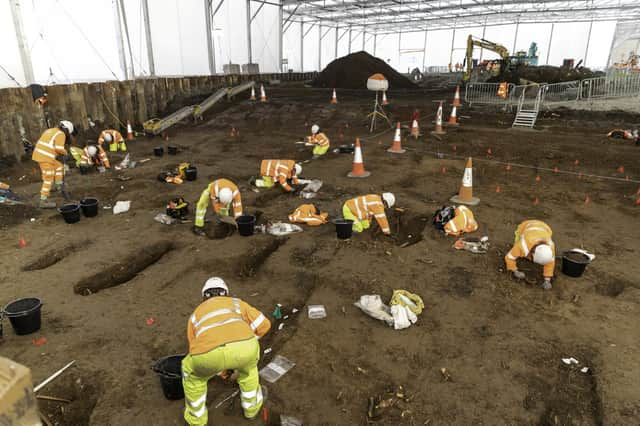BBC's Digging for Britain visits Hull graveyard dig and reveals trauma and injuries relating to Industrial Revolution


Professor Alice Roberts visited Trinity Burial Ground to meet the team and go behind the scenes at the on-site laboratories to find out more.
Archaeologists, who worked under huge tents next to the A63, uncovered a total of 9,500 skeletons, as part of National Highways’ £335m Castle Street upgrade.
Advertisement
Hide AdAdvertisement
Hide AdThe burial ground was in use during the Industrial Revolution between 1783 and 1861 when the city's population was rapidly expanding.
Discoveries of trauma and injuries to some of the human remains revealed the dangers of emerging technologies, with a team from Oxford Archaeology uncovering a victim of one of Hull’s worst docklands disasters. The remains of a man in his 30s found with blast injuries is thought to have been a passenger on the ill-fated Union steam packet.
The vessel was about to embark for her home port of Gainsborough when just after 6am on June 7 1837, its boiler burst with a tremendous explosion, ripping it apart.
Another possible victim of the explosion, which claimed as at least 23 lives, was also discovered in the dig. Both sets of remains showed extensive fracturing, with badly broken limbs.
Advertisement
Hide AdAdvertisement
Hide AdThe dig also revealed gruesome evidence of the precautions people took against bodysnatchers at a time when memories of the murders by William Burke and William Hare in Edinburgh were still fresh.
When 32-year-old engineer William Watkinson died in an accident in April 1835 when part of a boiler fell on him at Hull shipbuilders Brownlow & Pearson his coffin was wrapped in an iron "mortsafe" to prevent anyone digging his remains up.
In labs next to the huge tents where the excavations were carried out, a team of 10 osteologists examined the bones of 1,500 skeletons.
The experts looked for evidence of injury, while some chronic long-term illnesses - like scurvy and rickets - can leave their mark,
Advertisement
Hide AdAdvertisement
Hide AdThe team also uncovered the footprints of two early buildings that don’t appear on any maps and may relate to Wyke - the settlement which pre-dated Hull.
They also examined structures belonging to an 18th-century jail which stood at the north-east corner and was influenced by the work of prison reformers John Howard and Elizabeth Fry.
Originally Trinity burial ground served Holy Trinity Church, now known as Hull Minster, when its own cemetery directly outside the church ran out of space.
The programme will be broadcast at 8pm on Thursday 6th January and available afterwards on demand on BBC iPlayer.
Comment Guidelines
National World encourages reader discussion on our stories. User feedback, insights and back-and-forth exchanges add a rich layer of context to reporting. Please review our Community Guidelines before commenting.